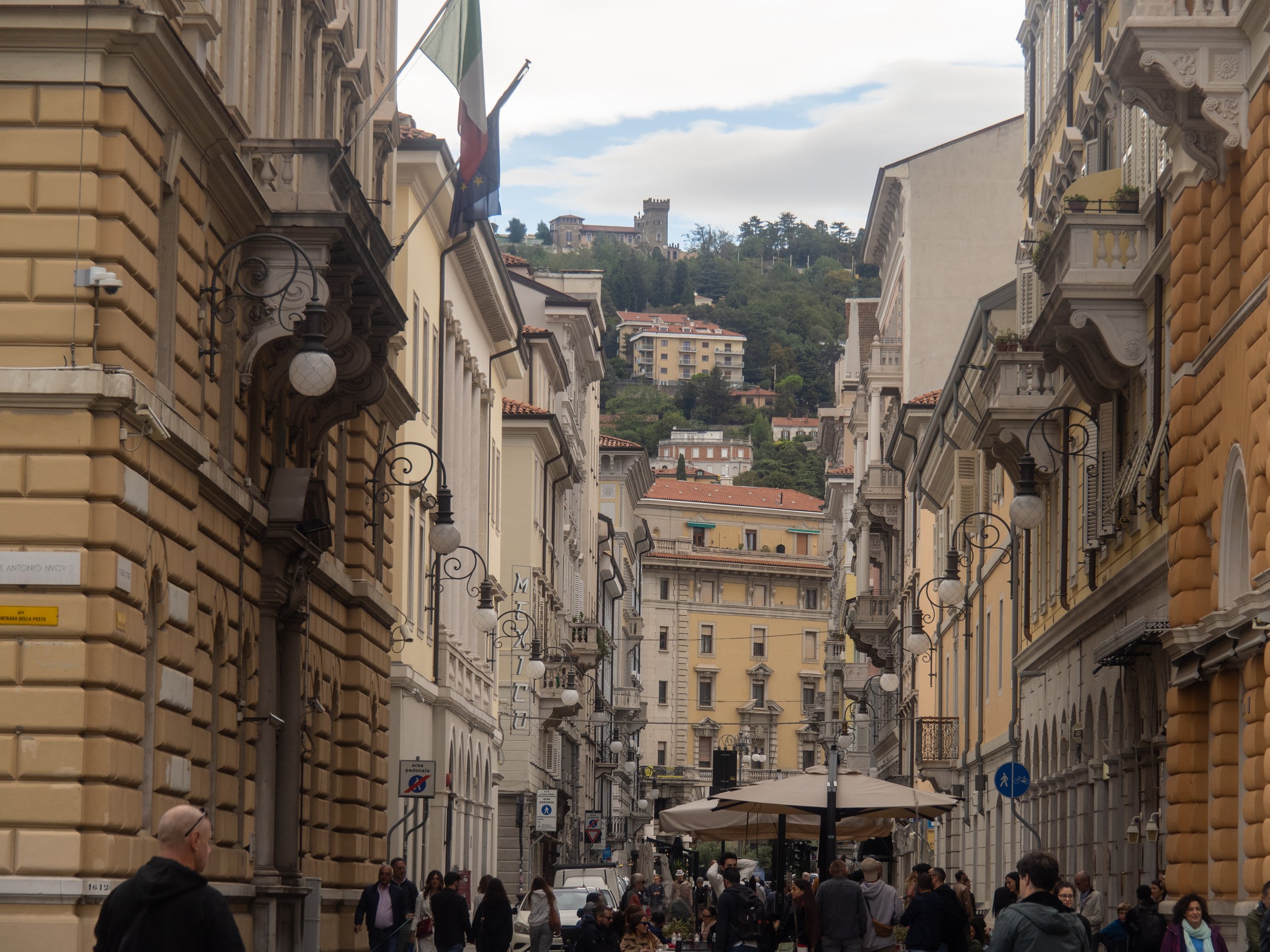Biking the Balkans pt. 2 - Istria
It was now time to descend out of the mountains to begin the seaside part of the journey. The pedal down the Soca River valley was the definition of tranquility, winding down a variety of gravel country roads and a riverside paved bike path. Hard to imagine this region as the scene of sustained trench warfare as the Italian Eastern front in WW1 against the Austro-Hungarian forces. Proud signs of Austro-Hungarian resistance dotted the trail network; interesting to gain a perspective of the “other side” of that (especially) pointless war.
One interesting historical note I wasn’t aware of was Italy’s involvement in WW1 and the ramifications for its role in WW2. The Italians were initially eager to remain neutral, but pressure from England to join on the side of the Allies included promises of significant land annexations across the Adriatic to reclaim what Italy felt should belong as part of their Republic. The Italians took heavy casualties fighting along the Eastern Front in very challenging conditions in the same rugged mountains we explored, enduring brutal winters moving through the high passes. Eventually succeeding along with the rest of the Allies, Britain, through pressure from America, reneged on much of the promises, with only Trieste and the surrounding area ending up under Italian sovereignty. The US wanted to break up the large empires they saw were the catalyst for the war, and saw the Italian control of these lands as counter to that strategy.
If the scope of the original land promises were kept, almost our entire trip would have been through in Italy, including all of Istria and Dalmatia south to Dubrovnik.
The long term consequence of this was the infuriating of the Italians, and likely contributed significantly to the rise of Facism in the country, the rule of Mussolini, and their role in the Second World War.
Soca River bike path
We did not have much of a set itinerary for this trip, and so as we crossed over a Slovenian-Italian border for the 5th, but not final, time this trip, we discussed a plan over lunch to check out the farming region north of Trieste instead of heading into the city itself, and stay In one of their agritourism towns at a farmstay. The place was adorable, served cool red wine from the tap for 1 euro a glass, amazing local food, and we enjoyed a noisy local experience at dinner surrounded by a massive family (including their dogs) celebrating a birthday, immersed in a cacophony of exuberant Italian energy.
Next was a smorgasbord of rich history, visiting the city of Trieste and Muggia at the Eastern end of Italy, then rolling onto the 123km Parenzana Trail, a historic rail line operating from 1902-1935, recently converted to a bike trail. We spent a memorable night in perfect seaside Piran back in our final pop into Slovenia, and then on and up into Istrian hill country and Croatian wine region. We stayed in a nice guest house down the hill from the incredible town of Motovun, and enjoyed delicious and cheap vina Rossa from the local winery. Finally, we headed to the south end of Istria and the city of Pula, a historic marvel boasting thousands of years of sites and stories.
Sanctioned Roman Abramovich's seized $800 million super yacht, anchored outside Trieste..
Trieste
Caffè San Marco - Famous cafe in Trieste, complete with these super cool copper espresso machines.
Parenzana Trail
Izola
Pretty farmland on the Parenzana to Piran
Piran
Mary's "meal of the trip". After a long grind on the bike that day, only a piece of cake for lunch at Caffe San Marco in Trieste, and being our first night on the coast, she was ready for a big seafood feast. Pirat Piran restaurant delivered the goods.
Piran
Piran
Piran
Piran
The rich and complex history of various cultures that habituated these lands is fascinating to read about and experience. The Romans, Greeks, Celtics, Venetians, Ottomans, as well as countless smaller sub-groups and modern slavic cultures were present in these areas, and all left their mark.
Heading inland towards Motovun
Groznjan
Hilltop Motovun, in central Istria, originally a Celtic settlement, before a long history as a Byzantine and then Venetian strategic fortress and stronghold
Parenzana Rail Trail
We were definitely stoked to visit the "World Truffle Center"
Motovun
Roman Arch dating back to the 2nd century AD, a few feet away from our hotel balcony in Pula
Pula has such a rich and fascinating history that many pages of writing would not adequately cover it. Looking at its location on a map, near the southern tip of Istrian jutting out into the Adriatic, its strategic importance is obvious. The Romans has the most obvious impact in its archaeological wonders, seeing significant development at the time of Julius Caesar, but was destroyed when it sided on the wrong end of the subsequent civil war after Caesar’s legendary assassination. Rebuilt on the request of victor and now current Caesar Octavian’s daughter Julia, it then changed hands many times after the fall of the Western Roman Empire.
As someone who has not visited the classic European archaeological sites, and from a place where a century old building is considered “historical”, this small seaside city was fascinating.
One of six major Roman coliseums in the world resides in Pula, Croatia
This took us to the end of our Istrian adventure, the beginning of our train misadventure, and our group expanding to explore Dalmatia and Montenegro.
The 15 euro "Croatian Meat Platter for 2"






























